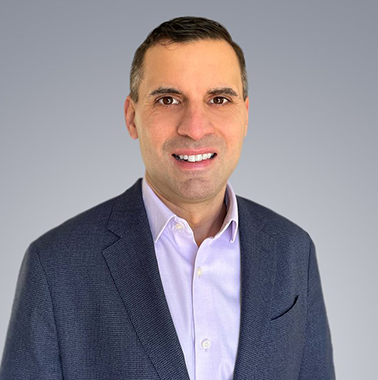Overcrowded emergency departments, a lack of hospital beds and skyrocketing healthcare costs are among the challenges facing the U.S. healthcare system. The ability to provide hospital-level care to select patients at home through the use of new technologies and in-home nursing visits provided temporary relief during the pandemic, and may soon become a permanent care model in the U.S. We spoke with Dave Kerwar, co-founder of Inbound Health, to learn more about which patients are benefiting from hospital at home care, where we stand with government and private payer reimbursement, and opportunities for MedTech providers to enhance this model of care as CMS and commercial payers consider long-term adoption.
Where are we at now in terms of hospitals getting reimbursed for hospital at home care in the U.S.?
Kerwar: At the outset of the pandemic, CMS instituted a waiver program that essentially said, if the providing physician deemed it safe and high quality to do so, healthcare systems could send patients that met the criteria for hospitalization home and recreate the hospitalization at home. That waiver was due to expire at the end of the pandemic emergency, but in December of 2022 CMS extended the waiver program by two years, meaning it is in effect until the end of 2024. So, health systems can do this for Medicare fee for service patients and get full reimbursement.
We are fully expecting that CMS will create a permanent benefit for hospital at home care. There is a lot of evidence that patients and family members really like this model, and CMS likes it because it opens up access and potentially lowers cost. From a health system perspective, if they are capacity-constrained, it allows them to care for more patients.
One of the things we do is negotiate contracts on behalf of our health system partners with the large payers in their markets. We have successfully negotiated private contracts with both commercial and Medicare Advantage payers, so that our health system partners can provide this care for commercial and Medicare Advantage patients, as well as Medicare fee for service patients.
The watershed moment will be when CMS announces whether they are going to make this a permanent benefit for Medicare beneficiaries. We expect that when that happens they will not continue to reimburse the full inpatient payment, because part of the value is that you’re not only caring for patients at home but you’re taking some of the costs out of the system.
What are the healthcare organizations finding in terms of who the best candidates are for hospital at home versus in-hospital care?
Kerwar: We’ve provided care to over 6,000 patients. We look at the patient’s clinical profile, their functional status—how able they are to complete activities of daily living on their own, and their home life. Those are the three main domains we use to identify patients for hospital at home care.
From a diagnostic perspective, you see a lot of congestive heart failure, COPD, some types of chronic kidney disease, and sepsis recovery—that is a big one. We also have a post-surgical program for orthopedics and bariatrics. These patients typically go into our skilled nursing program—the SNP at home care model versus hospital at home. Rather than referring the patient to a skilled nursing facility, the provider will admit them to the hospital’s SNP at home program, and this also allows the hospitals to own a wider swath of the care model.
We are consistently finding new types of procedures where we can potentially discharge the patient the same day. For example, transcatheter aortic valve replacement (TAVR), where instead of having the patient go through a lengthy recovery process in the hospital, we can bring them home sometimes on the same day. We have expanded hospital at home to over 300 different disease states, but about 80% of patients fall within 40 or so disease states, and these are typically lung conditions, cardiac conditions, skin issues and post-surgery patients.
I think it’s clear why this is good for the patient, a lot of people would prefer to be at home. How does it benefit providers? Does it make their life easier or more difficult in terms of having to get to the patients?
Kerwar: Our model is we bring the physician care. So an emergency department (ED) physician, for instance, can get the patient out of the ED and to the next phase of care much more quickly, because you are not waiting for a bed. There is a significant ED overcrowding issue in this country, so to the extent that you can move them on to the next phase of care more quickly, it is better for everyone. For that reason the physicians really like this model of care. We then provide the virtual physician care and the in-home nursing and home therapy. Our virtual hospitalists report that they really enjoy this kind of care because they can spend a lot more time with the patient, and they also tend to get a view into the patient’s home life, which allows them to be much more educated about how to care for the patient.
From the hospital perspective, the main benefit is opening up capacity. It frees up hospital beds so they can use that bed for a patient who cannot get their care from home. It also shortens the length of stay. Hospitals that take on full risk for their patients also like this level of care because you’re able to lower the medical expenses, which provides a financial benefit to the risk-bearing provider.
What types of MedTech are required to provide this level of care, and are there any gaps you’re seeing where we need more innovation to make this truly effective long-term?
Kerwar: We have a technology platform that we developed. We give every patient a tablet or an iPad and pre-install a mobile app that we call the Virtual Call Light. It’s basically equivalent to a call light in the hospital. The platform can do chat, video and virtual visits. It also includes surveys and alerts, so it allows the patient to interact with our entire care team. We’re also bringing in biometric monitoring equipment—blood pressure cuffs, blood oxygen monitors, scales for weight and thermometers for temperature—and all that data streams in real time to our command center to give us an overview of the patient on a regular basis.
The gaps are in building additional biometric monitoring devices and converting them to a wearable format. For instance, the devices right now for blood pressure are mainly the cuffs, so the patient has to take their own blood pressure. That works fine, but sometimes our nurses need to do it when they’re in the home because the patient cannot do it themselves. If we had a wearable device that could continuously monitor patients that would be hugely valuable. So we are very interested in those types of vendors. Devices that can monitor risks outside of vital signs, such as fall risk or ambulation, for example, would also be very helpful.
You mentioned the virtual call light, how are healthcare organizations handling staffing to respond to alarms or call light signals from patients as well as data monitoring?
Kerwar: We bring that staff to the table so the healthcare entities don’t need to worry about that. Some health systems have some of the staff they need, but not all of them. For instance, they might have a remote patient monitoring team that monitors the vitals of patients who are recently discharged, and some systems are using those teams. But the reality is, hospital at home is a different care model from remote patient monitoring, so you do need a specially trained team. Most, but not all, of the partners we work with take us up on using our staff because they are purposefully trained on this level of care, they are centrally located, and typically we can provide the staff at a lower cost versus hiring 10 new nurses or 10 new physicians. Part of our goal was to help solve that staffing problem because a lot of healthcare centers just don’t have the people or the capacity in their schedules.
What are the areas where personal visits remain preferable to a high-tech solution?
Kerwar: The Medicare waiver program requires twice daily nursing visits, and we definitely believe this is a hybrid model. We leverage a combination of nurses and staff that falls under a new licensure called Community Paramedics, which are basically paramedics that are trained to provide in-home community care versus trauma care. We find that it is necessary to get into the home on a regular basis—at least every other day if not every day, because there’s only so much you can do virtually. You need to be able to see the patient, whether it’s related to biometrics, therapy or pharmacy. When you’re closing those care gaps it’s important to put hands on the patient. We do not have any patients that we could care for 100% virtually. Our average patient age is 85 years old, and they are typically very clinically complex. So it is important that we get into the home to care for that person.







